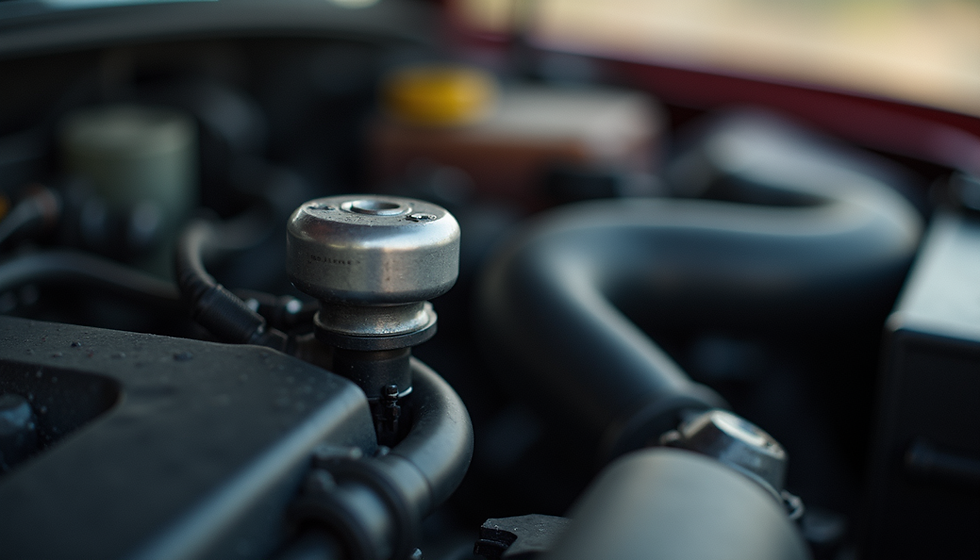EVS' Impact on The Automotive Aftermarket
- Autolast Ghana

- Nov 28, 2022
- 3 min read
Updated: May 2, 2024

What is the solution?
Transform the sales process by training the frontline. Dealers can keep digitizing the sales process and provide customers with a smooth, omnichannel experience that covers not just the EV itself but also the whole ownership experience, including charging and service. By incorporating EV-specific features in the showroom (such as the fast-charging experience), they may improve the customer experience and give customers a whole package that makes EV ownership as easy as possible (for instance, selling preferred installation services for at-home charging equipment).
Additionally, whether through online direct sales or on the lot, consumers are increasingly demanding both transparency and uniformity in price across different sales channels. Consumers want to know they are receiving a decent return on their investment because there are so many websites that make comparison shopping as simple as a few mouse clicks. Automobile dealerships are thus forced to choose between maintaining competitive vehicle pricing and the higher production costs of EVs. As a result, EVs have lower average dealership sales margins than ICE automobiles. Furthermore, an OEM's growing influence over price regulations and internet channels may further weaken a dealership's ability to affect sales margins.
EVs won't become widely used until the middle of 2030, according to predictions made. This gives vendors a window of 7–10 years to plan. The addition of software or advanced electronics capabilities, whether organically or through acquisitions, joint ventures, or partnerships, are possible strategic moves. Another option is to plan to exit business segments that may experience slower growth as EV adoption increases, or to get ready to sell the entire company while revenue and profit are still strong.
The biggest auto parts manufacturer in the world, Bosch, has unveiled a number of innovative technologies to help the car industry make the switch to electric vehicles. The titan of German industry appears to be more open to the notion that EVs will be the form of transportation of the future.
However, even though EVs usually require less maintenance work than ICE cars and have fewer service touchpoints, maintaining EVs still calls for specific skills due to the complexity of the activities required. As a result, each maintenance visit can call for more billable service hours and produce more money per hour. Dealers may also provide fresh service options. For instance, if advanced driver-assistance systems (ADAS) become more prevalent, more vehicles could have to undergo the customarily drawn-out and difficult sensor-calibration procedure. Of course, it will also cost money to prepare the service industry for EVs, as we go into more depth about below.
We assert that Original Equipment Suppliers (OES) hold more intellectual property (IP) than OEMs because it is still unclear whether OEMs and their dealers will be able to safeguard their confidential knowledge of the new EV technologies (especially software) and use it to exploit drivers for longer periods of time. Furthermore, according to Norway's aftermarket perspective, IAM garages will be equipped to service used EVs when demand for them increases. Overall, OEM dealers face a large risk that the increasing EV penetration will accentuate other trends and further transfer traffic to the IAM players.
One solution may be remanufacturing.
Instead of replacing the entire pack with a new one, this approach includes utilizing specialized software to identify and change out particular dead cells in a used battery. It is more environmentally friendly and can last an additional seven years, and maybe seven more after that, at a fraction of the price of an OEM replacement. For a compact urban EV, a typical remanufactured battery pack may cost $2,700, less than a fourth of the cost of a brand-new pack.
Increase your fleet.
Dealerships could reconsider how they resale old cars, targeting them, for instance, towards rideshare drivers or those looking to work in the industry. As a result, dealerships would be able to lower the cost of their outdated inventory while simultaneously drawing in prospective new customers. For small- and medium-sized fleet owners, dealers may also provide fleet services with an emphasis on low-cost maintenance and repairs delivered through reliable service networks.
Parts and Service.
Since EVs often have fewer mechanical parts that break down, our analysis of how electrification would affect aftermarket part profitability revealed that car dealers will likely see a decline in aftersales parts revenue. When compared to comparable aged ICE cars, aftermarket spending on EVs is likely to be up to 40% lower (Exhibit 4). The largest disparities between EV and ICE aftermarket spending are likely to be found in routine maintenance, consumables, and items like brake pads that are prone to wear and tear (for instance, fluids and traditional powertrain parts). However, due to the technological design of EVs, expenditure on additional chassis elements, EV engine parts, thermal parts, and tires will increase with time.
#EVS #environment #sustainability #greenliving #cleanenergy #electricvehicle #ecofriendly #renewableenergy #climateaction #greentechnology










Comments